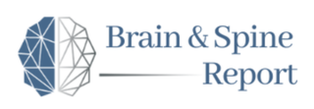|
Author(s): Pedram Maleknia, MBA (1,3); Makayla Kochheiser, BA (2,3); Kyle Zappi, BS (2,3)
Affiliation(s) (1) School of Medicine, University of Alabama at Birmingham, Birmingham, AL, USA (2) School of Medicine, Weill Cornell University, New York, NY, USA (3) Medical Student Neurosurgery Training Center, Brain and Spine Group, Inc., Pasadena, CA, USA Date Submitted: 13 November 2021 Date Published: 22 November 2021 Abstract In today’s ever-changing, data-driven environment, advocacy is more important than ever before. Through technology, experts from across the world can connect and share information, ideas, and knowledge in a matter of seconds. This is why global partnerships, aimed at eradicating diseases that have plagued low- and middle-income countries (LMICs) for decades, are vital towards ending the vicious circle of poor health outcomes in these regions. Here, we examine and describe how neurosurgeons have used advocacy as a tool to reduce the global burden of neural tube defects. Manuscript Neural tube defects (NTDs) are a prominent source of worldwide morbidity and mortality [1]. Spina bifida (SB) is one of the most common types of NTDs and is the result of a failure of the fusion of the caudal neural tube [2]. The severity of SB occurs on a spectrum, depending on the location of the lesion, and will require lifelong medical management provided by a multidisciplinary team of neurosurgeons, orthopedists, urologists, rehabilitation specialists, and many more [3]. However, well-designed studies have shown that folic acid fortification and/or supplementation can prevent up to 70% of SB cases [2,4]. With the inception of mandatory folic acid fortification in the United States in 1998, the number of young children affected by SB at birth decreased by more than 50% [5]. This number has remained constant at 5 per 10,000 births since this change, with similar changes in other countries that have initiated mandatory folic acid fortification [4,6-7]. However, only 65 countries worldwide are enforcing mandatory folic acid fortification,4 with variable efficacy based on fortification doses and the food vehicles fortified, leading to prevention of only 23% of the preventable cases of NTDs worldwide [4]. Clearly, further action to encourage implementation of well-constructed, context-specific fortification policies is necessary. This is where the work of Dr. Jeffrey Blount, Chief of Pediatric Neurosurgery at Children’s of Alabama, and Dr. Gail Rosseau, Clinical Professor of Neurosurgery at George Washington University School of Medicine and recent recipient of the American Association of Neurological Surgeons (AANS) Humanitarian award, has come to the forefront. Beginning at a neurosurgical conference, the two neurosurgeons endeavored to promote the “vaccine” for neural tube defects. Through diligence and persistence, they have assembled a group of experts within neurosurgery, epidemiology, nutrition, and genetics. These experts include previous directors of the Centers for Disease Control and Prevention (CDC), current members of the World Health Organization (WHO), and many more. The group, now known as the Global Alliance for Prevention of Spina Bifida (GAPSBi-F), is currently drafting a World Health Assembly Resolution. The resolution has the potential to incentivize action to reduce the burden of NTDs in the areas with greatest need [8]. Further action items for GAPSBi-F include:
In addition to contributions of clinicians working towards mitigating the burden of SB in LMICs, the group benefits from the involvement of medical students. Medical students coordinate logistics, including scheduling weekly meetings, managing documents and publications, and creating an organized agenda. This “secretariat” facilitates the work of busy clinicians. Folate fortification is an effective means for reducing the global burden of NTDs. Through science-based activism and support, neurosurgeons play an important role in the implementation of folate fortification efforts. These actions will be particularly important in LMICs. Conclusion The continued multidisciplinary effort to reduce the global burden of NTDs among all countries is an example of the power neurosurgeons have to improve the health of patients even outside the operating room. References 1. Atta CA, Fiest KM, Frolkis AD, et al. Global Birth Prevalence of Spina Bifida by Folic Acid Fortification Status: A Systematic Review and Meta-Analysis. Am J Public Health. Jan 2016;106(1):e24-34. 2. Mitchell LE, Adzick NS, Melchionne J, Pasquariello PS, Sutton LN, Whitehead AS. Spina bifida. Lancet. Nov 20-26 2004;364(9448):1885-1895. 3. Beierwaltes P, Munoz S, Wilhelmy J. Integument: Guidelines for the care of people with spina bifida. J Pediatr Rehabil Med. 2020;13(4):543-548. 4. Kancherla V, Wagh K, Pachón H, Oakley GP, Jr. A 2019 global update on folic acid-preventable spina bifida and anencephaly. Birth Defects Res. Jan 1 2021;113(1):77-89. 5. Mills JL, Signore C. Neural tube defect rates before and after food fortification with folic acid. Birth Defects Res A Clin Mol Teratol. Nov 2004;70(11):844-845. 6. Kondo A, Matsuo T, Morota N, Kondo AS, Okai I, Fukuda H. Neural tube defects: Risk factors and preventive measures. Congenit Anom (Kyoto). Sep 2017;57(5):150-156. 7. Kancherla V, Tsang B, Wagh K, Dixon M, Oakley GP, Jr. Modeling shows high potential of folic acid-fortified salt to accelerate global prevention of major neural tube defects. Birth Defects Res. Nov 2020;112(18):1461-1474. 8. Estevez-Ordonez D, Davis MC, Hopson B, et al. Reducing inequities in preventable neural tube defects: the critical and underutilized role of neurosurgical advocacy for folate fortification. Neurosurg Focus. Oct 2018;45(4):E20. Conflicts of Interest: The authors report no conflicts of interest concerning the material or methods used to develop this manuscript. Acknowledgements: The authors would like to thank Drs. Jeffrey Blount, Gail Rosseau, and Godfrey Oakley, and their respective departments of neurosurgery at the University of Birmingham Heersink School of Medicine, University of George Washington, and the Emory School of Public Health, for their guidance. Editor(s) Nathan A. Shobin, BA Senior Student Editor Section Editor for Global Health, Neuroscience Research and Education, Pediatric Neurosurgery, and Health Systems and Ethics Michael W. Kortz, MBA Interim Editor-In-Chief Brain & Spine Report Medical Student Neurosurgery Training Center Comments are closed.
|
Categories
All
Archives
October 2023
|





11/22/2021